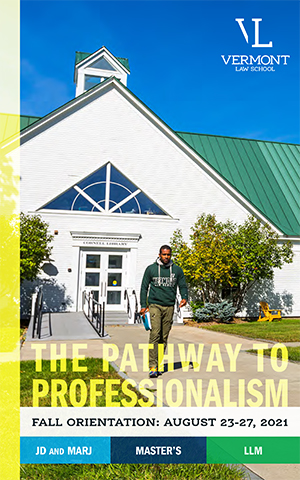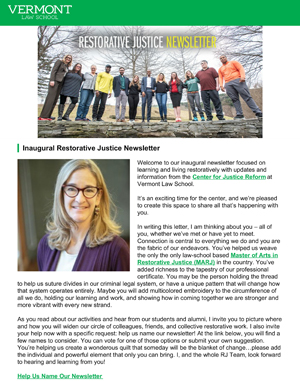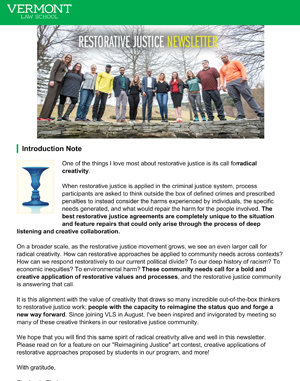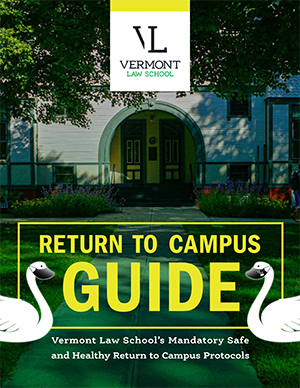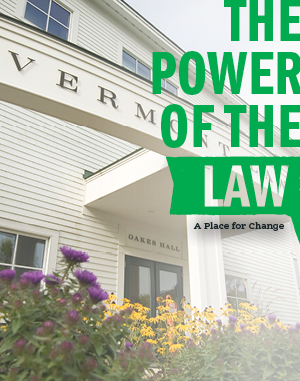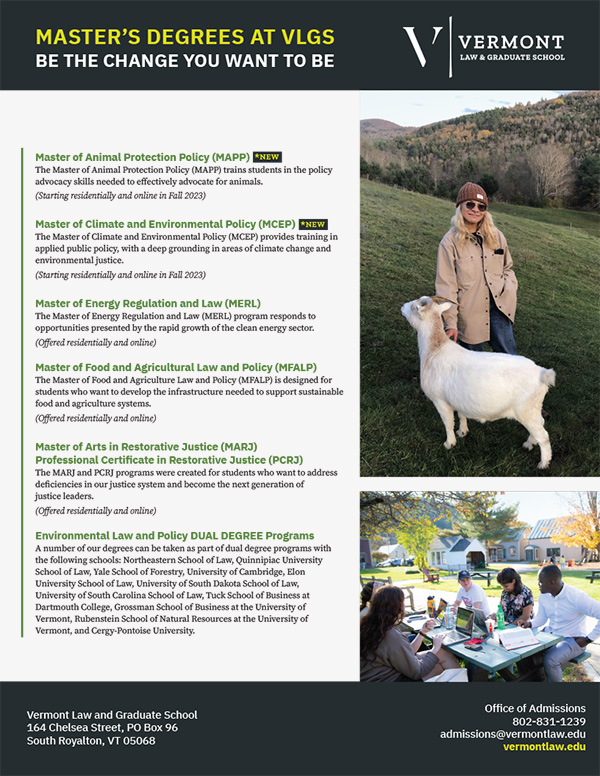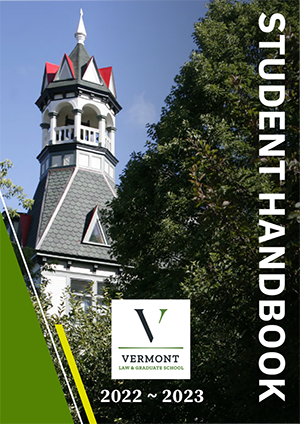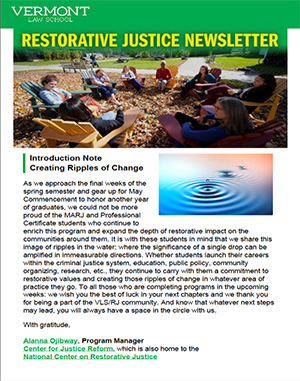You see it when you walk through the student workroom door of the environmental and Natural resources Law Clinic (ENRLC) at 190 Chelsea Street—an evocative, five-foot-wide, bronze mural celebrating whitewater adventure. The striking panorama, sculpted by the western artist Sandy Graves, shows a fast-moving wilderness river with high wind-bent trees along the banks and a pair of kayakers in a magical descent. Imaginative, river-running art might not belong in most legal offices but it feels right at the ENRLC, where law students have a long, rich history of not only protecting the outdoors but being full-blooded participants in it.
The newly installed work was created for and dedicated to the late Alan Panebaker JD/MELP’11, an expert Class V paddler whose outsized impact at the school continues to be felt and honored. The work was commissioned by a school-organized fundraising committee made up of Alan’s friends and teachers, hopeful that new students at the clinic where Alan once worked might be drawn to his example, and inspired by his memory.
“He was a model here because he was passionate and committed in everything he did,” says Professor Pat Parenteau, who mentored Alan. “He had this perfect balance between work and play.”
Panebaker tragically drowned September 19, 2012, when his kayak was pinned underwater in the Pemigewasset’s Flume Gorge in New Hampshire’s White Mountain National Forest—an advanced stretch of whitewater he regularly ran and deeply adored. The river was swollen from heavy rainfall the night before, making the testing conditions uniquely attractive for a person of Alan’s skill and experience. Beginning in his eagle Scout days, he had always followed the rain to his favorite rivers.
"I've never seen anybody in my entire life so excited to see it rain," recalls Ben Leoni JD'11, Alan's VLS roommate. "He loved the rain. He just couldn't wait to get out the door and get on the river."
Panebaker wasn’t the typical law student even in a place not known for typical law students. He skied 45 days a year on average, squeezing in many of those days on the big backcountry hill looming over the campus; along with studying for demanding courses he ran countless demanding rivers. In class he was considered a brilliant student who was fearless in taking on new challenges. He said his pursuits weren’t a distraction to his studies, or even an escape, but regular, vivid reminders of why he wanted to be an environmental steward in the first place. To be in the electrifying grip of a rain-jolted creek or at the precipice of an imposing, perfectly sculpted backcountry chute deepened his intimacy with wild places and fired his resolve to fight for them. Shortly before his death he began what everyone expected would be a sterling advocacy career as the northeast director of stewardship for the nonprofit American Whitewater.
Alan had arrived at the school in 2008 wondering if it was the place for him, Leoni recalls. He had been raised in the majestic open spaces of the West, his dad a supervisor at numerous national parks. The South Royalton campus, hemmed in by low hills, at first made him feel claustrophobic. Panebaker soon shed the feeling, getting out to ski runs and rivers that felt as liberating as anywhere he’d ever been. As the workload mounted, Leoni and Panebaker would wake early for pre-class runs on Elephant Hill. Those explorations into a place so close and familiar made the discoveries they made—and they made many, says Leoni—extra memorable. The last day they skied together, in New Hampshire's Tuckerman Ravine, was only a few months before Panebaker died.
They were scouting from the Gulf of Slides with photographer Peter Wadsworth when they saw a line they’d never done before—a perilous, extra-advanced 50-degree steep run known as Dodge’s Drop. “It wasn’t as if we went out that day seeking some objective. We were just having a great day, and when we noticed it we had to have a look.” the look led to an extraordinary run—and a keepsake picture of Alan in full gale, snapped by Wadsworth at the moment their buddy dropped in.
In the grief over the news of Alan’s death, the school community and numerous others came together in a series of memorials. At a friend’s home perched above Montpelier, an emotional and immediate gathering of local friends led to a roaring bonfire, hours of stories, and periodic releases of Chinese sky lanterns, which ascended into the mountain darkness as balls of glowing light. A few weeks later, more loved ones came from Alan’s assorted communities—his parents from Colorado, paddling companions from Quebec, his mentors at the law school. They collected by the New Haven river for a last goodbye. Parenteau hoped everyone would remember Alan’s unhesitating ability to jump into almost anything, and that he was an example of someone who was on his way to capturing his dream and making a difference. Parenteau wanted to make the point that the future was an uncertain, anxious time for many students studying law. Alan’s work—and play—at VLS had led him to do exactly what he wanted to do.
In between the moving eulogies, some planned, some spontaneous, Leoni was struck more than anything by the perfection of the day. It was raining. The river was rising. It would’ve been one of those mornings where Alan would’ve been up early and he would not have been at all quiet about it.



